This no-knead rosemary garlic sourdough bread is a beginner-friendly artisan loaf that's seasoned with dried herbs, garlic and (optionally) nutritional yeast. Proof overnight and then bake in a Dutch oven!
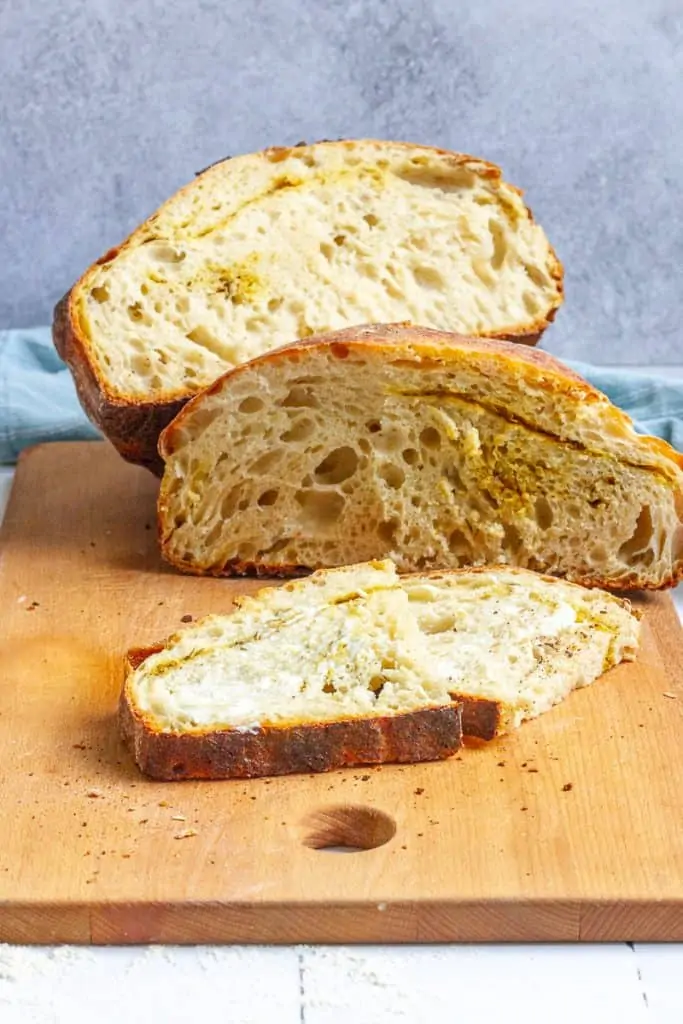
It was bound to happen.
I'm not even surprised.
I've fallen hard for sourdough. I love it.
The year 2020 made life... interesting. And one of the "interesting" things for me was that my favorite sourdough bread was never in stock anymore.
So, I decided to make my own.
But guys, sourdough bread recipes can be really overwhelming! Especially at first.
For months I simply worked with my starter and made discard recipes. But finally, I knew it was time.
Except I wanted to make an easy sourdough loaf.
I started off using a super basic, no-knead sourdough bread recipe from King Arthur. Then I read more about the science behind no-knead breads and made a few tweaks to the recipe to make the dough easier to work with.
And of course, I couldn't resist adding extra flavor. This rosemary garlic sourdough bread recipe uses dried herbs, garlic powder and (optionally) nutritional yeast for a (cheese-less) cheese flavor.
Also, I should give a special "thank you!" to my friends Brittany and Sally who answered my bazillion sourdough questions.
Want more flavored sourdough bread ideas? Try making this sourdough cinnamon bread.
Is this Rosemary Garlic Sourdough Bread Difficult to Make?
Difficult? No.
Time consuming? Oh my, yes.
Like many sourdough recipes, this rosemary garlic sourdough recipe requires patience. It is, admittedly, a two-day process, but most of the time is simply spent waiting on the dough to do its thing.
It's perfect for days when you're working at home. Set a timer, go back to what you were doing, and then take a break to tend to your bread.
That said, this is a no-knead sourdough, so you don't need any prior bread baking experience. It's okay if kneading dough is a struggle, because we're skipping the kneading.
Is it worth it? Absolutely.
You'll feel so accomplished after you make your bread! Take a picture and show it off to all your friends.
I recommend reading through this post and the recipe in full before starting. Make sure you understand the process and have everything you need before starting.
Do I Really Need a Sourdough Starter?
Yes.
This bread recipe uses sourdough as the leavening agent.
If you don't have a sourdough starter yet, I recommend checking out my milk kefir sourdough starter or kombucha sourdough starter, or you can also buy a sourdough starter.
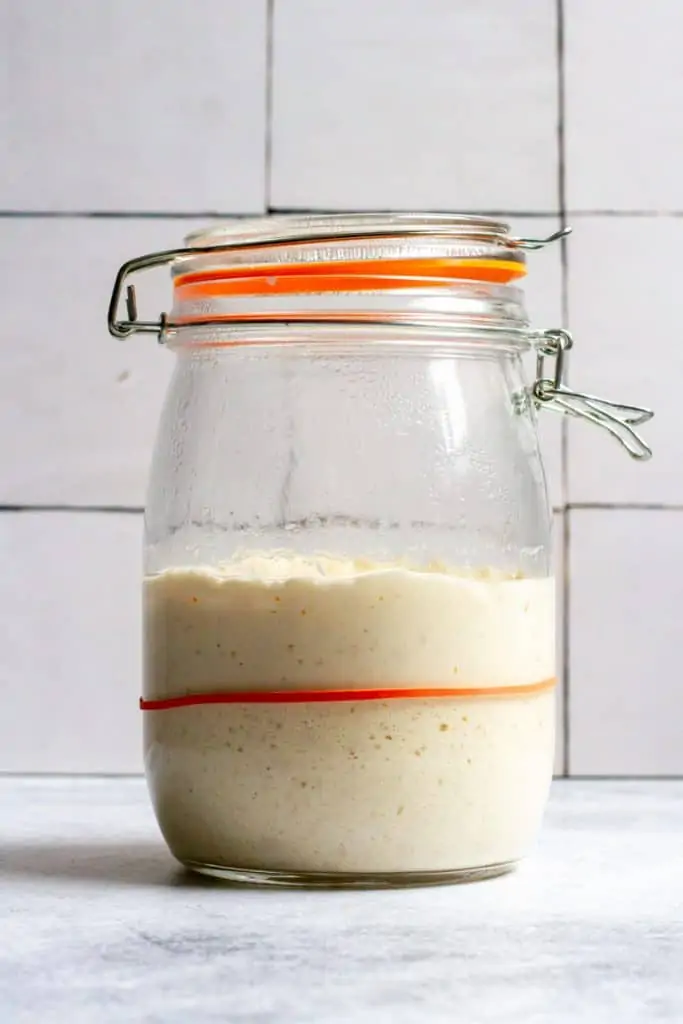
Can I Use Sourdough Discard For This Bread?
No, for this recipe you need a bubbly, active starter.
If you're looking for sourdough discard recipes, check out our sourdough blueberry pancakes, sourdough pumpkin pancakes, sourdough oatmeal pancakes and gluten-free sourdough pancakes.
What Equipment Do I Need?
As you learn more and more about sourdough bread, you'll find that there are lots and lots of accessories. Most of the accessories are extras (or even loaf specific), but there are a few things that are necessary or very helpful.
You'll need a five to seven quart Dutch oven with tall sides (not a braiser pan). I use a five-quart cast-iron Dutch oven.
I highly recommend using a digital kitchen scale and measuring the ingredients by weight, especially if this is your first time making bread. I use this OXO digital scale.
Finally, I highly recommend using a digital thermometer to test for doneness.
Other items that you might find helpful, but which are totally optional, include: a large silicone pastry mat, a flexible dough scraper, a bread lame and a spray bottle filled with water.
I also use my Cuisinart stand mixer in this recipe, but since this is a "no-knead" recipe, you can skip the stand mixer and use a spoon or a dough whisk.
Do I Really Need Bread Flour?
Yes, you do. Bread flour is a high-gluten flour and bakes differently than all-purpose flour.
If you're having trouble finding bread flour, or if you ordered your groceries online and they gave you all-purpose flour by mistake (I speak from experience), here's what to do.
You can make your own bread flour by sifting together all-purpose flour and vital wheat gluten. All-purpose flour is easy to find and vital wheat gluten is easy to order online.
Check the recipe card notes for homemade bread flour measurements and directions.
This recipe was tested using both King Arthur organic bread flour and homemade bread flour with King Arthur organic all-purpose flour and Anthony's vital wheat gluten.
Can I Make This Gluten-Free?
Unfortunately, no.
The structure of this particular bread recipe relies on the gluten.
Why Add Nutritional Yeast?
Nutritional yeast adds a mild cheesy flavor to the bread, without actually adding cheese.
It's simply for flavor, and if you can't find it or want to skip it, that's totally fine. Actually, you can skip all of the flavor add-ins if you prefer, and make an unflavored Dutch oven sourdough bread.
Not sure where to find it? You can order Bragg's nutritional yeast and Anthony's nutritional yeast online.
Make the Rosemary Garlic Sourdough Dough
Day 1
Start by adding the sourdough starter, bread flour and water to a large bowl. I use the basin of my stand mixer.
If you're using a stand mixer, use the paddle attachment to mix the dough for about a minute. Otherwise, use a spoon or dough whisk to mix everything together.
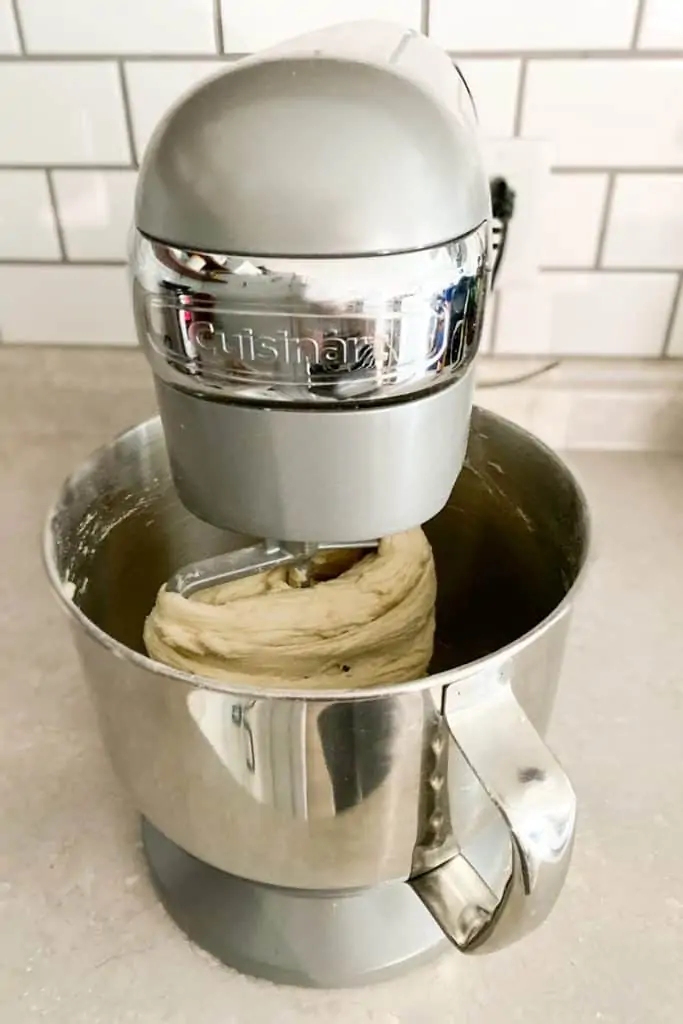
The Autolysis Rest
Allow the dough to rest for about 20 minutes before adding the salt.
This rest is called an autolysis rest, wherein the proteins in the flour begin to break down on their own, without any kneading at all.
It's pretty cool. It's also an important step, so don't skip it or rush it.
And also, make sure not to add the salt until the next step, because salt can prevent autolysis. If you add the salt first, your dough will be looser and harder to shape.
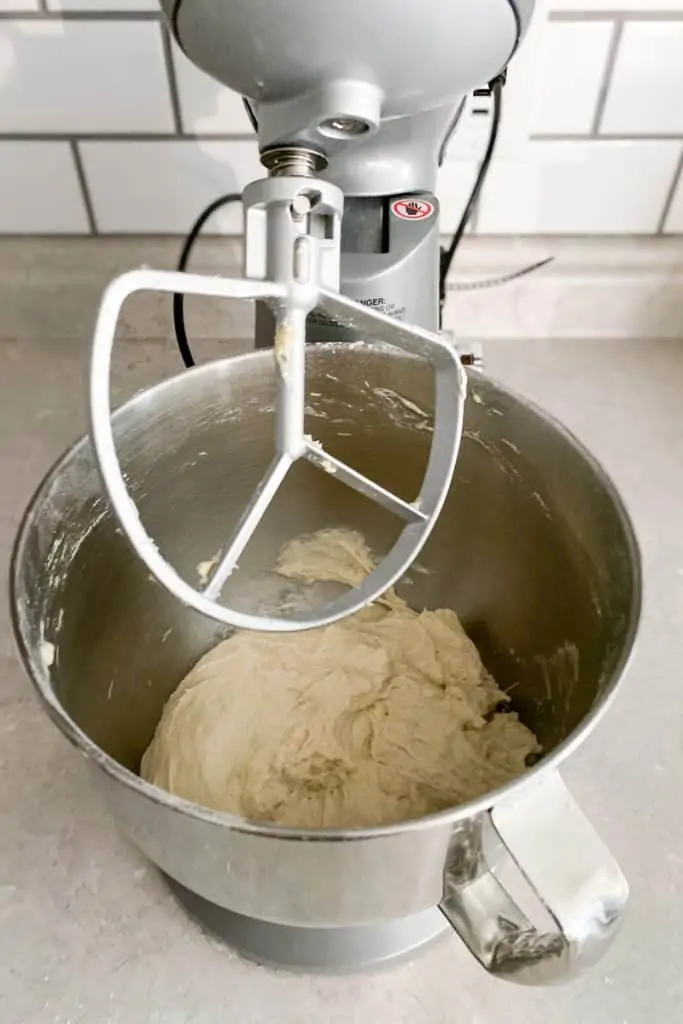
Next, add the salt and stir again. If your salt doesn't want to incorporate, simply use your fingers to lightly work it into the dough.
Resting, Stretching + Folding the Dough
Place the dough in a non-reactive bowl and cover the bowl. Let the dough rest for an hour.
Next, prepare your work surface by spritzing it with water. I use this large silicone pastry mat.
Move the dough onto the work surface. I find it's easiest to work with this dough if I keep my hands, the work surface and my flexible dough scraper slightly damp with water.
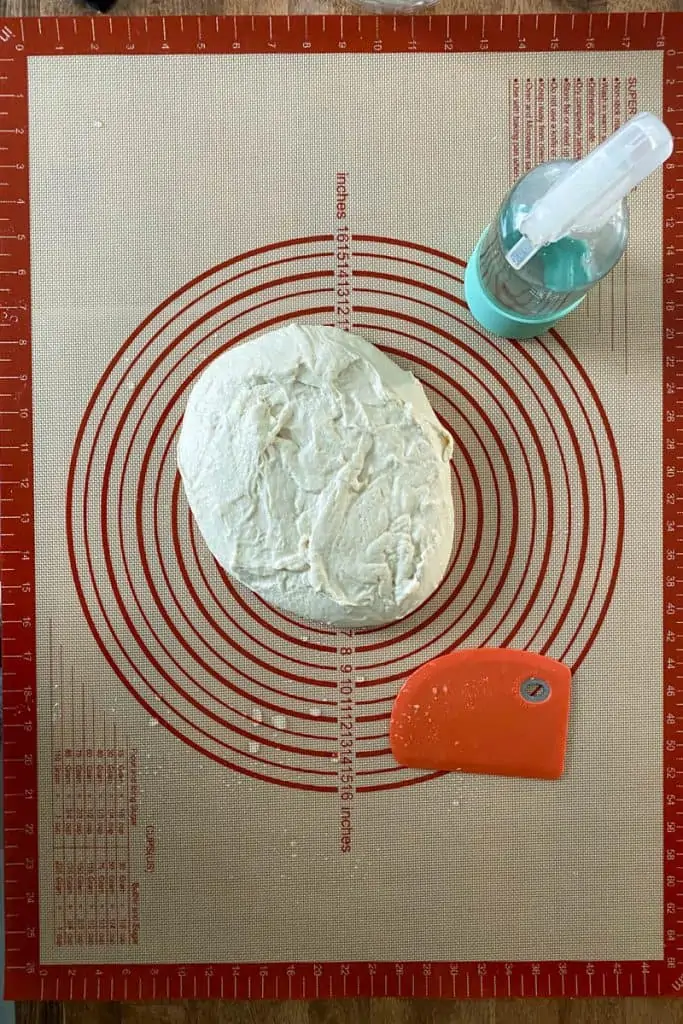
Begin by stretching the dough out just a little.
Use your hands or a dough scraper, whichever is easier.
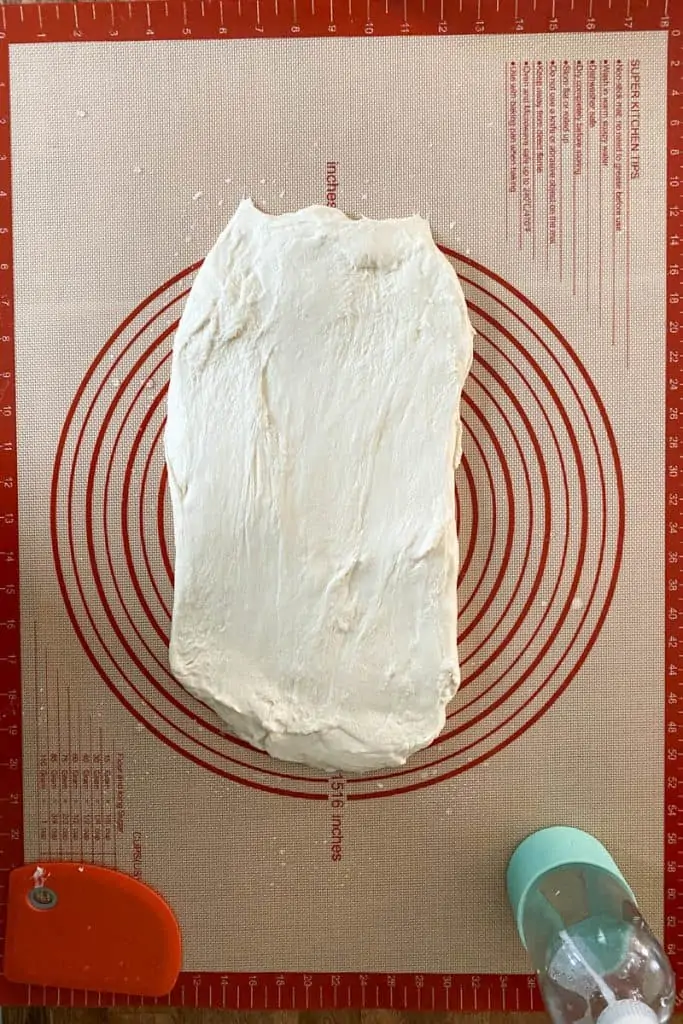
Fold the dough like a letter.
I like to fold the top third down and the bottom third up.
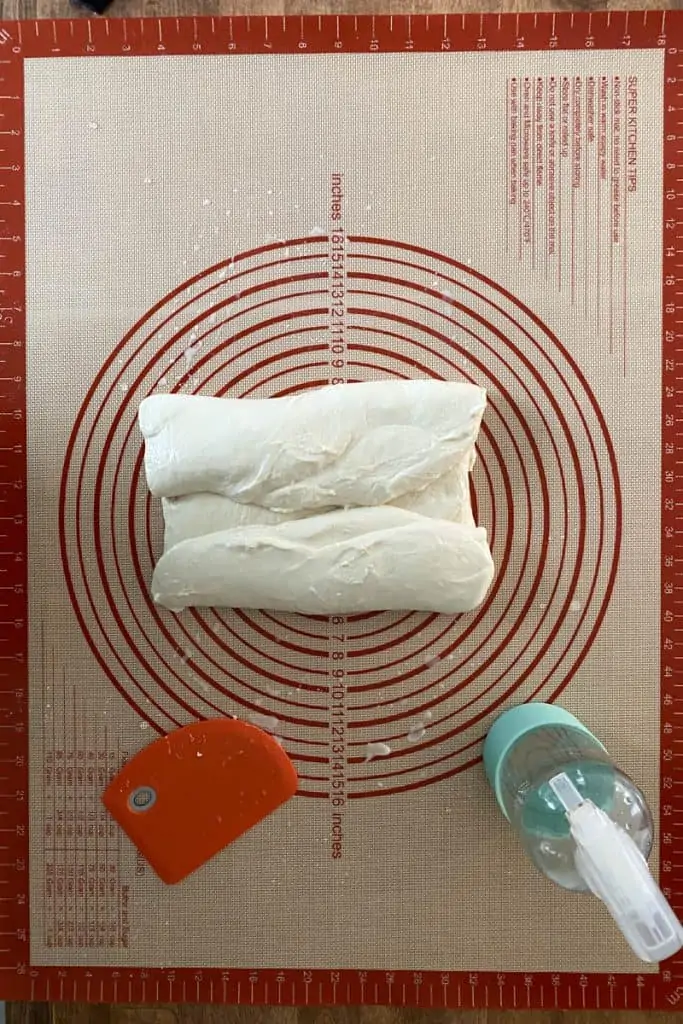
Next, fold the two sides in.
You'll be left with a square-ish piece of dough.
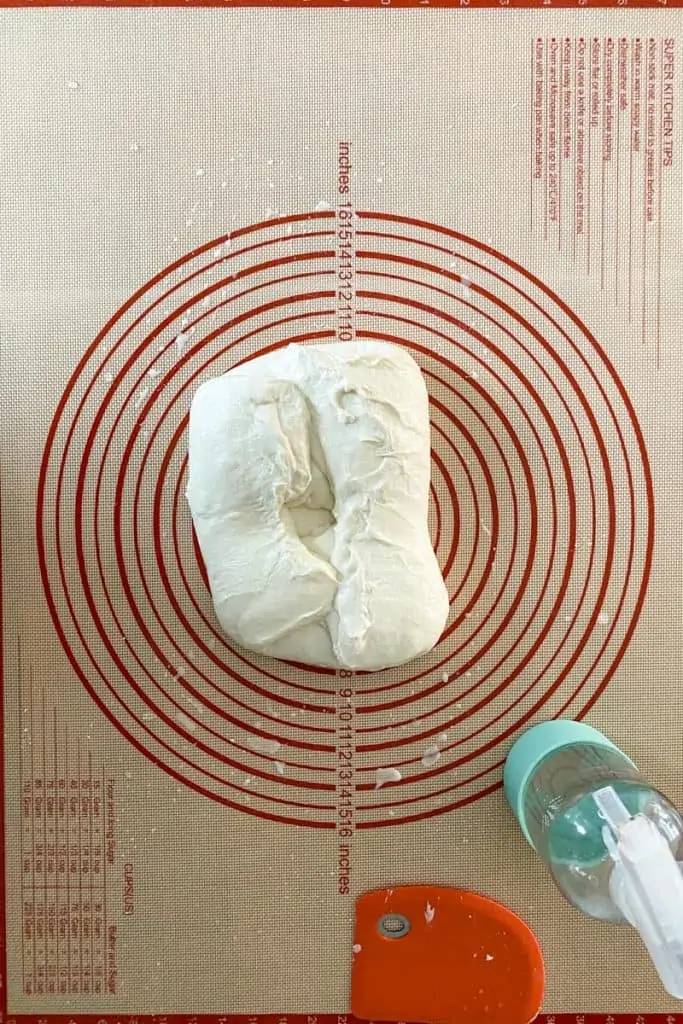
Flip the entire thing over and stretch and fold it again on the other side.
Return the dough to the bowl, cover with a damp towel, and rest again for another hour.
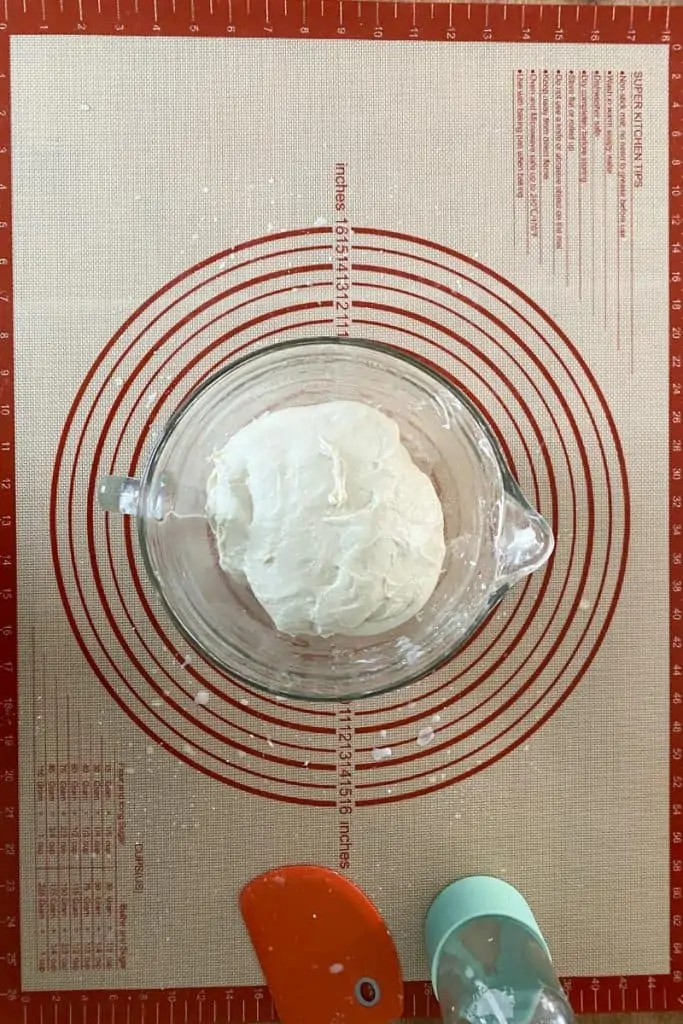
Repeat the stretching and folding process after the rest period.
Rest again.
You're going to do one more stretching and folding session with the dough, but for this third (and final) stretching, you'll be folding in your flavors.
Stretch the dough and sprinkle dried rosemary, garlic powder and (optionally) nutritional yeast across the dough.
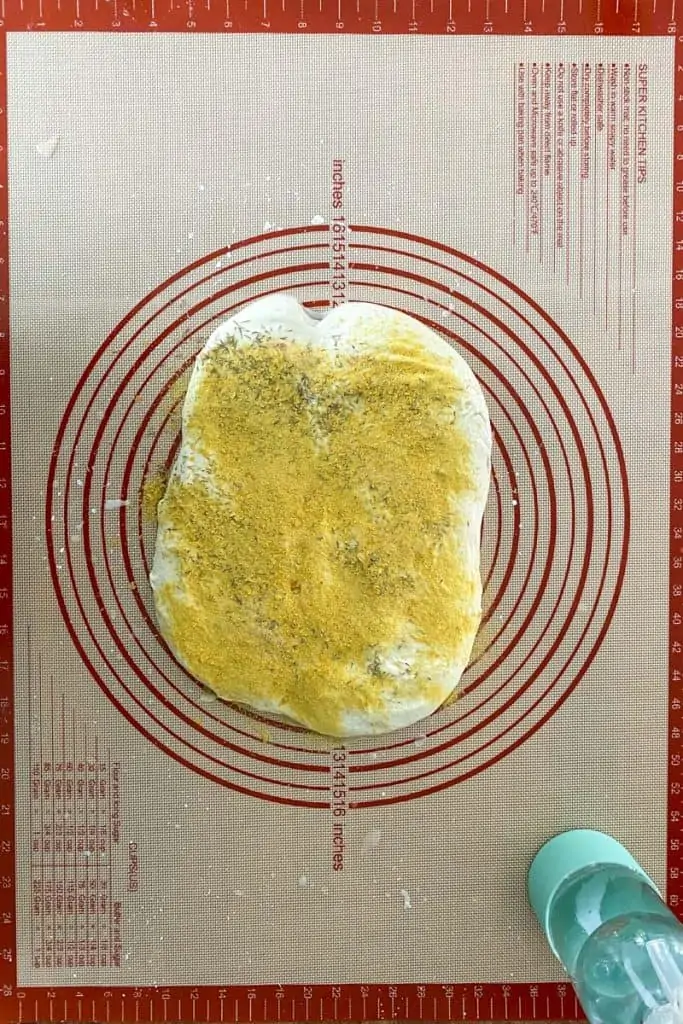
Fold the dough again.
You're folding it the exact same way as before, except this time you're folding in all kinds of yummy flavors.
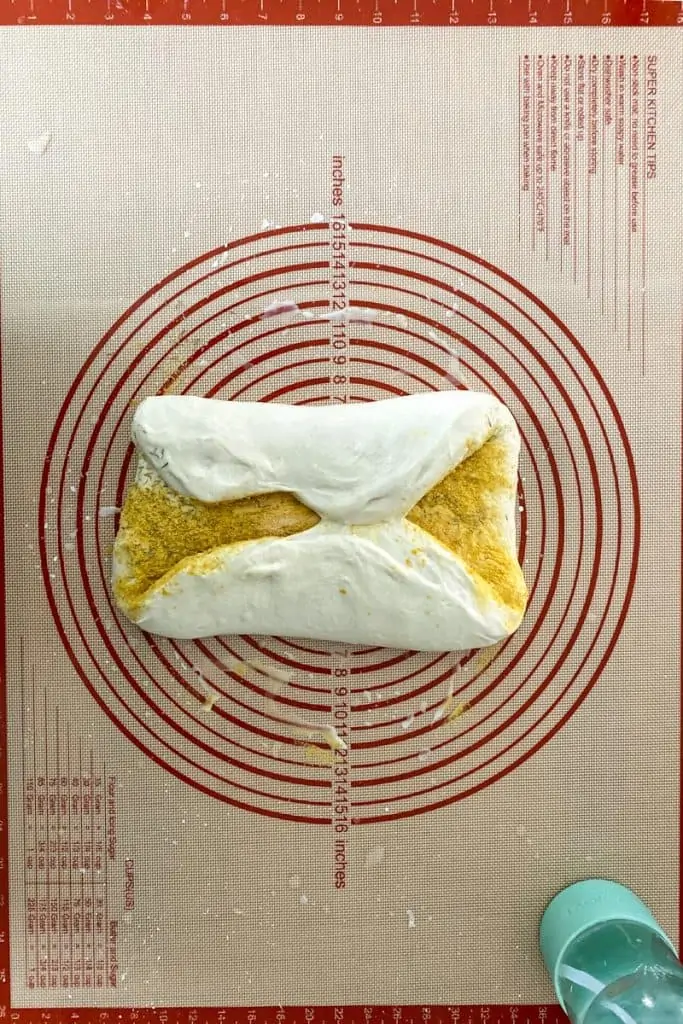
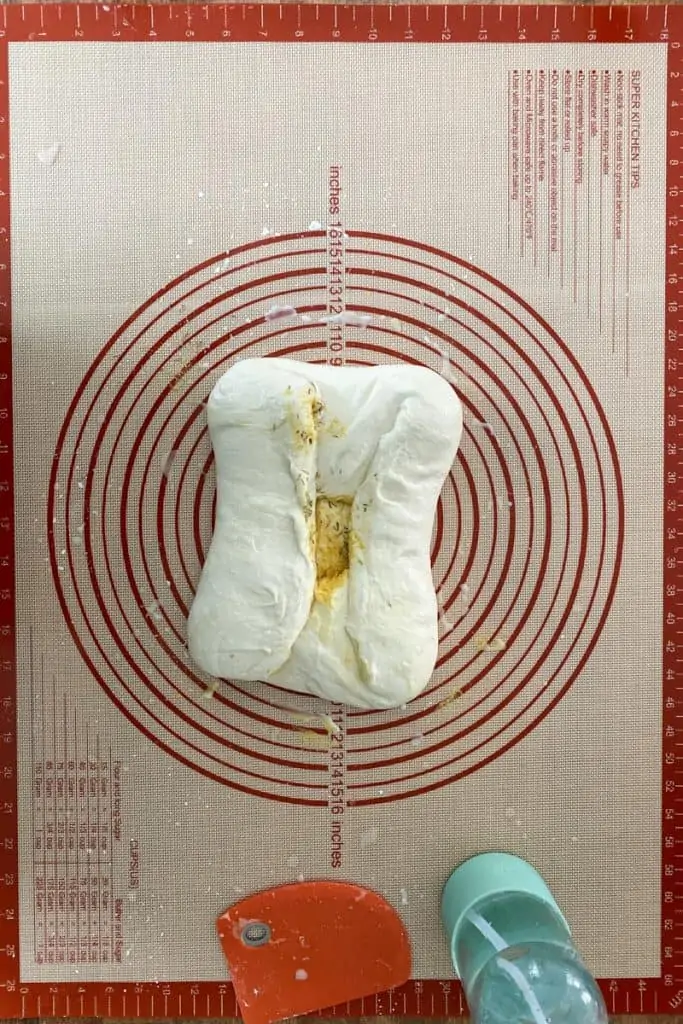
Flip the dough over. Stretch the dough, and add more rosemary, garlic and nutritional yeast.
Place the dough back in the bowl and cover the bowl with a damp towel, plastic wrap or (my favorite option) a lid. If your bowl came with a lid, use that instead of disposable plastic.
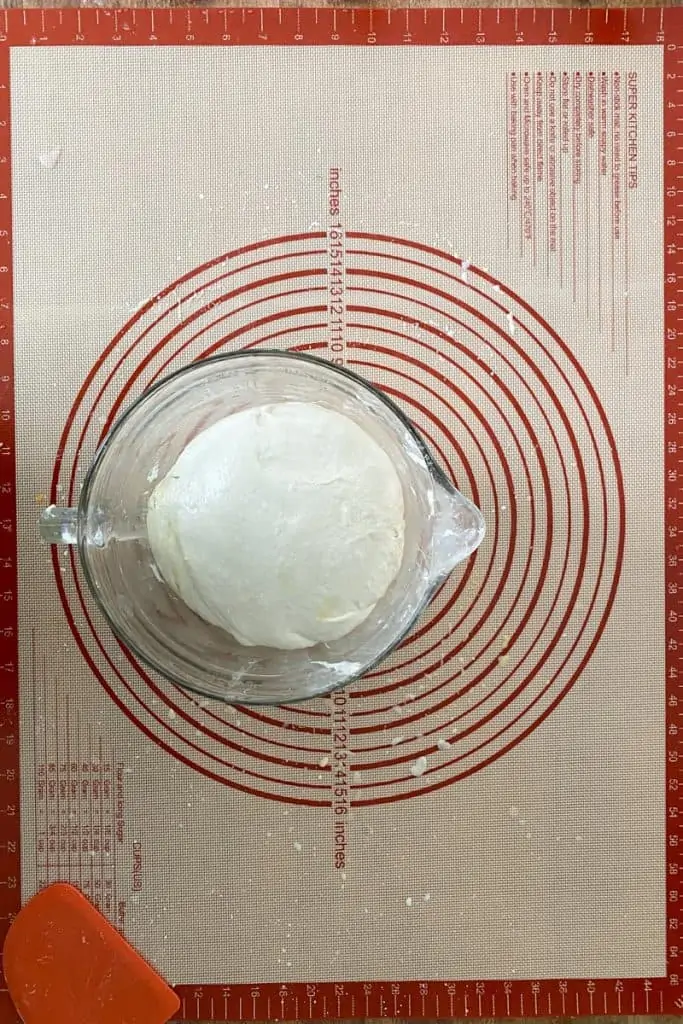
The Overnight Proof
At this point, you've got options.
Option 1: Refrigerator Proof
A refrigerator proof is the preferred sourdough proofing method.
The chilled dough will proof slowly and the sourdough flavors will (at least in theory) be better developed.
This method is also a little more forgiving, because you can put the dough in the fridge and leave it for up to two days. Meaning your life doesn't have to revolve around sourdough for two back-to-back days.
However, this method is a little slower, because after chilling you'll need to let the dough rest (again) to bring it back to room temperature.
Option 2: Room Temperature Proof
Even though the refrigerator method might be the "best" method, that doesn't mean it's the only method! I've also tested this bread using a room temperature proof (because my fridge was too full for dough!), and I think the flavor developed really well.
If you opt for a room temperature proof, here are a few things to keep in mind.
Avoid using this method if your kitchen is much warmer than 70 degrees Fahrenheit.
This isn't a great option for a hot summer kitchen. If your kitchen is too warm, the dough will proof too quickly, the flavors will be off and your over-proofed dough could deflate in the oven.
Since the temperature is less predictable with a room temperature proof, make sure to test the dough by pressing on it with an oiled or floured knuckle to see if it's done proofing.
If the dough bounces back quickly, it's not ready. If it's slow to bounce back, it's ready.
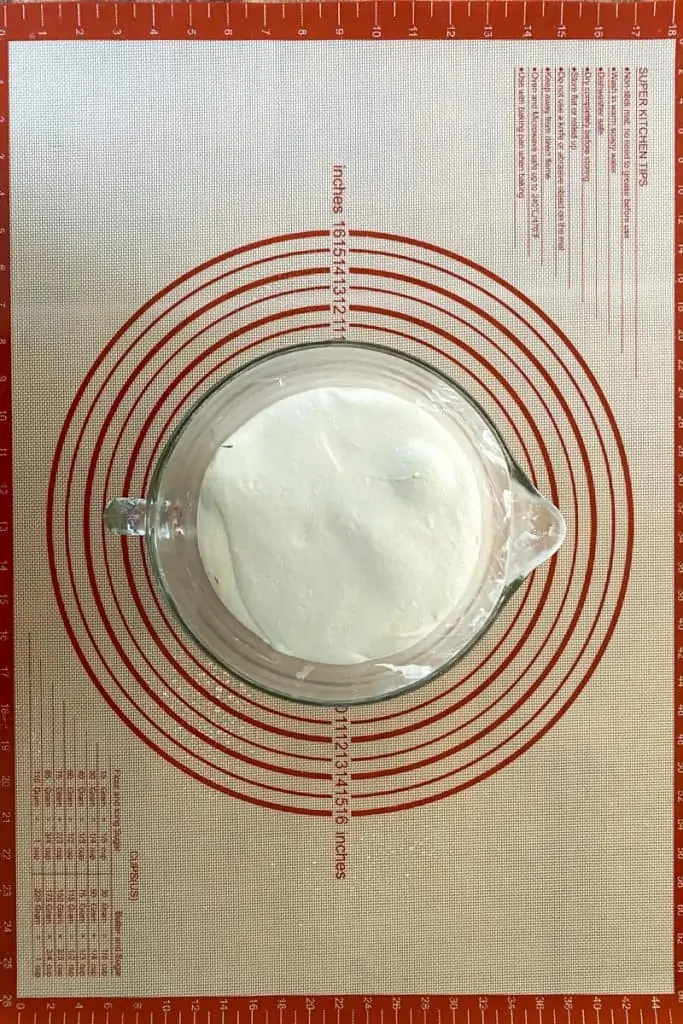
Bake the Bread
Day 2
Move the dough onto a damp work surface. Pull it into a ball and let it rest, seam-side up, for about 15 minutes.
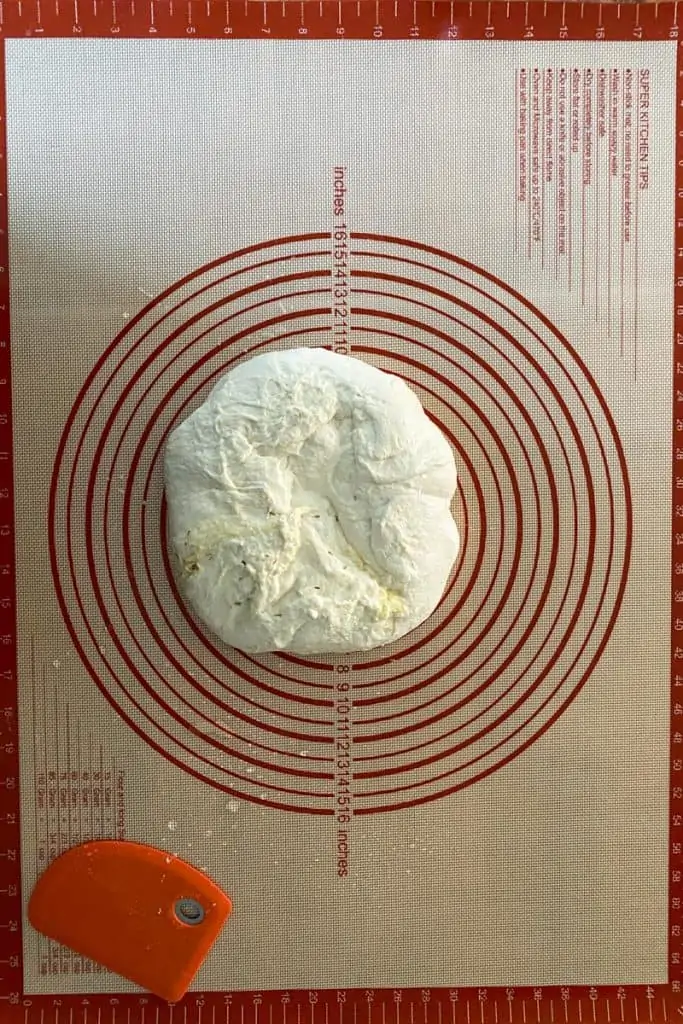
Next, move the dough onto parchment paper.
If you did a refrigerator proof, you'll need to let the dough rest for two to three hours to warm up.
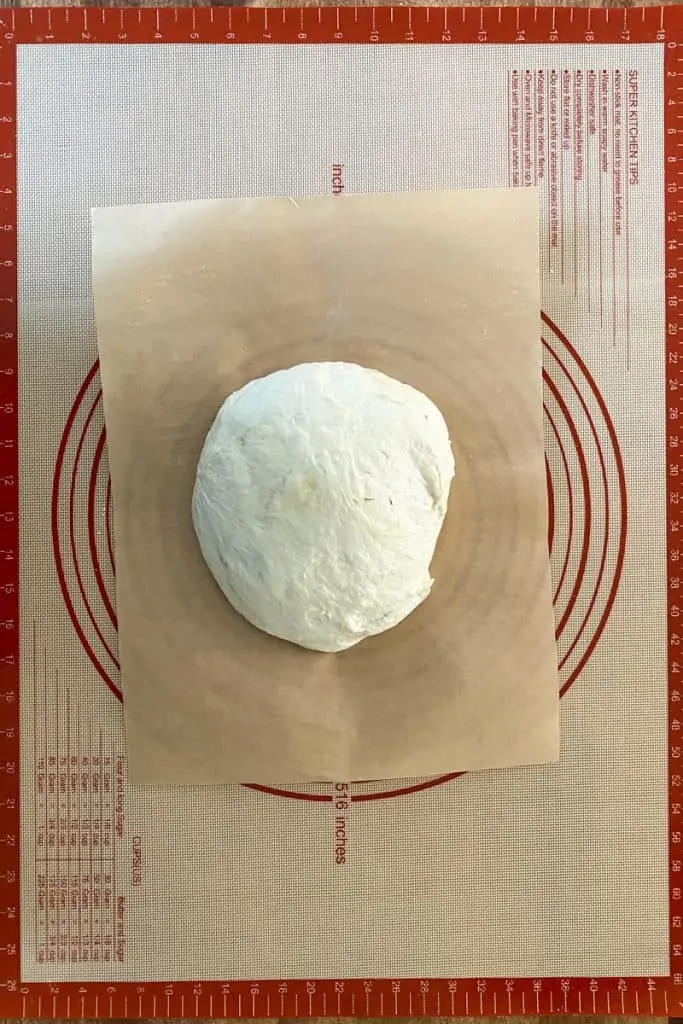
Preheat oven for at least 30 minutes before baking.
Some sourdough recipes call for preheating an hour ahead of time, but I've found 30 minutes to be plenty.
Optionally, preheat your Dutch oven too. If you're using an enameled Dutch oven, skip pre-heating it because you could crack the enamel.
Just before baking, dust your loaf lightly with flour and score the dough with a bread lame or a floured knife. If you forget to score the dough, it's not the end of the world and your bread will still be delicious.
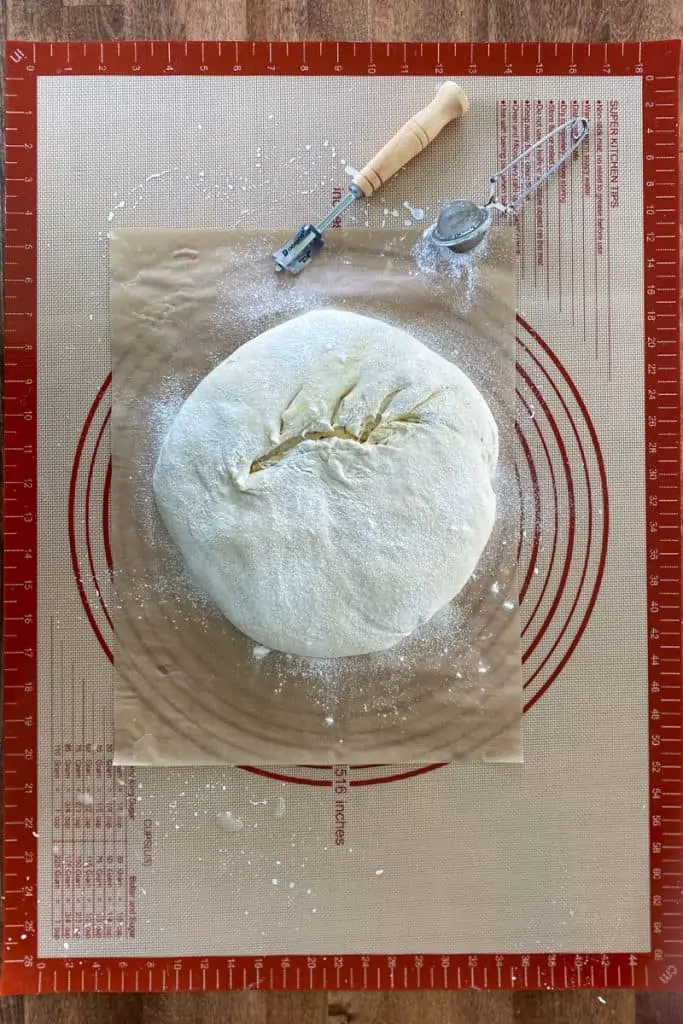
Move the dough into the Dutch oven, spritz the dough with water, and set the lid on the pot.
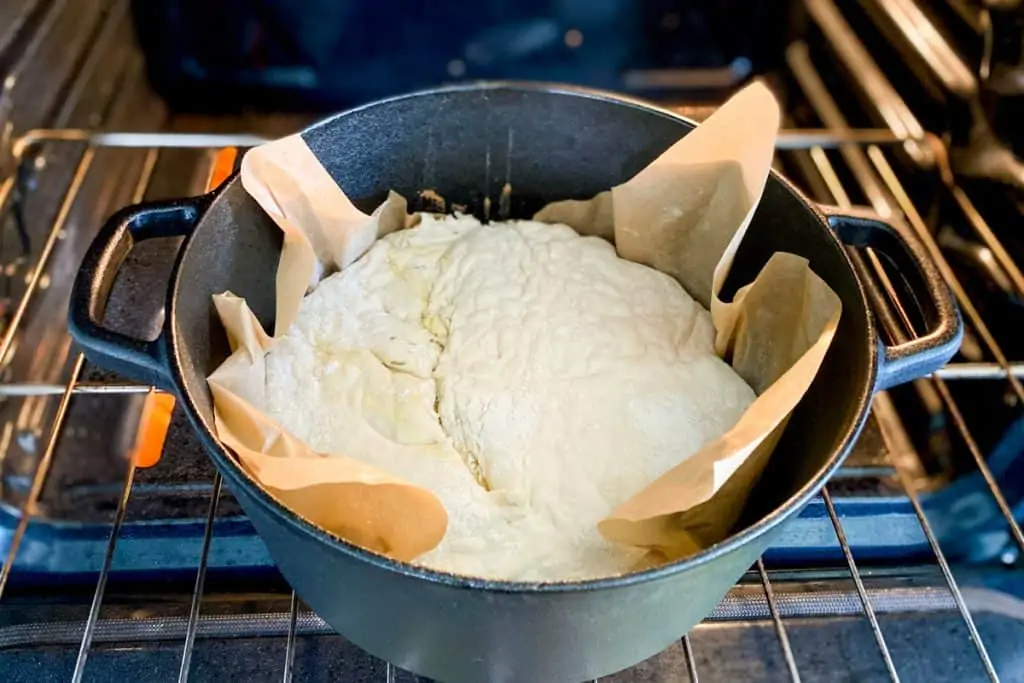
Bake the bread covered for 45 minutes.
Next, remove the cover and cook 10 to 15 minutes uncovered.
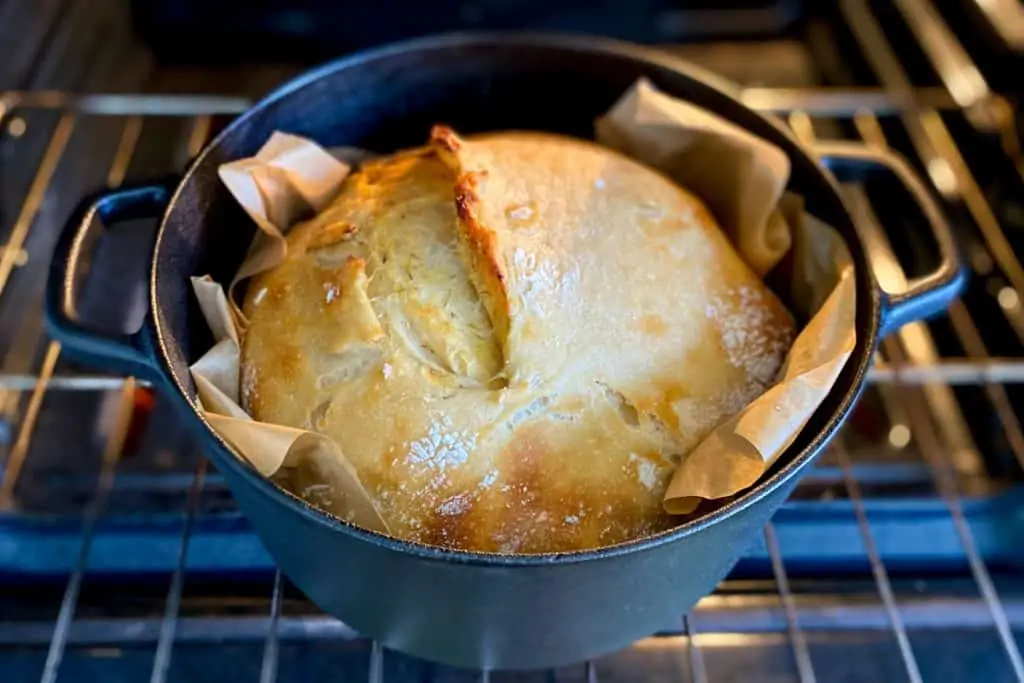
The bread is done baking when a digital thermometer reads 210 degrees Fahrenheit.
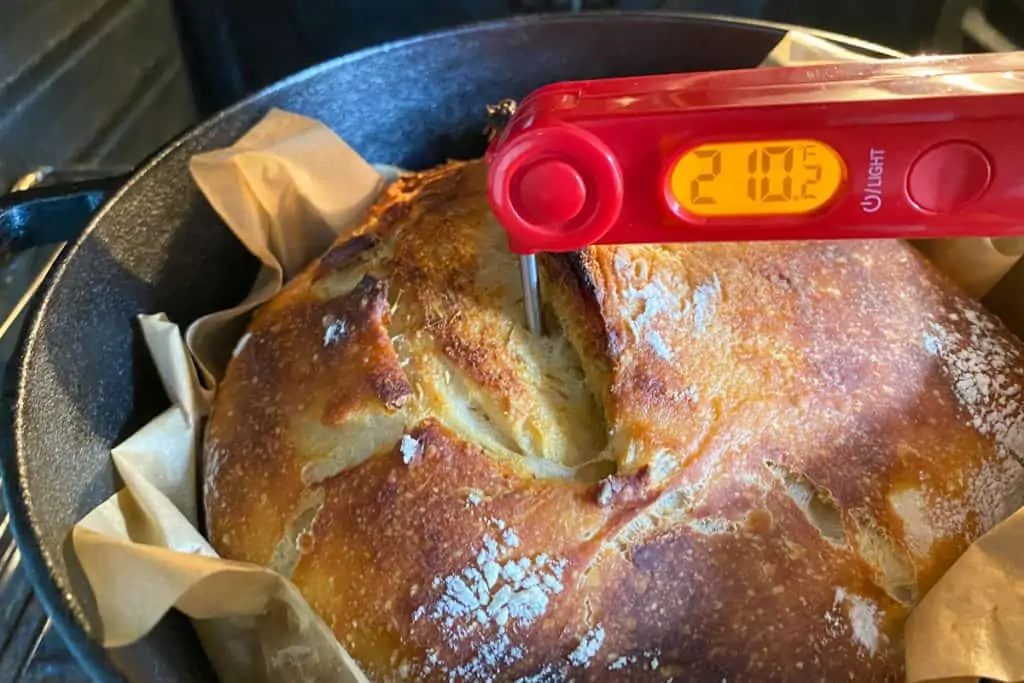
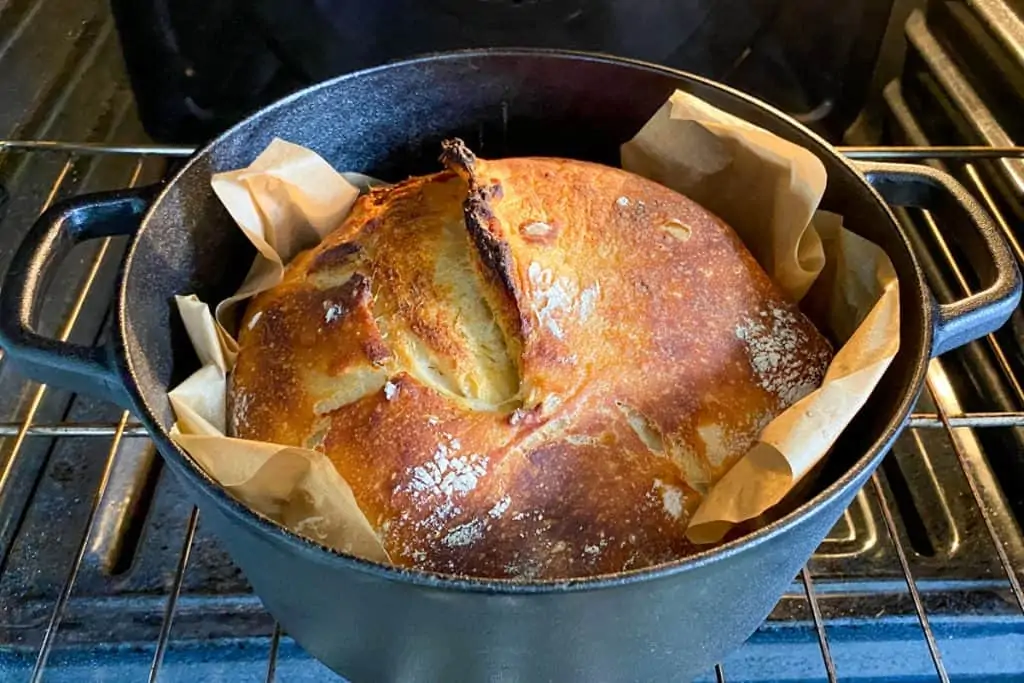
Cool the Bread Before Cutting
This is very important.
Your bread will smell amazing when it comes out of the oven, and you'll be tempted to slice into it right away. Don't.
The bread is still cooking on the inside.
Wait at least two hours before slicing it. Cutting early could result in an under-done, gummy loaf.
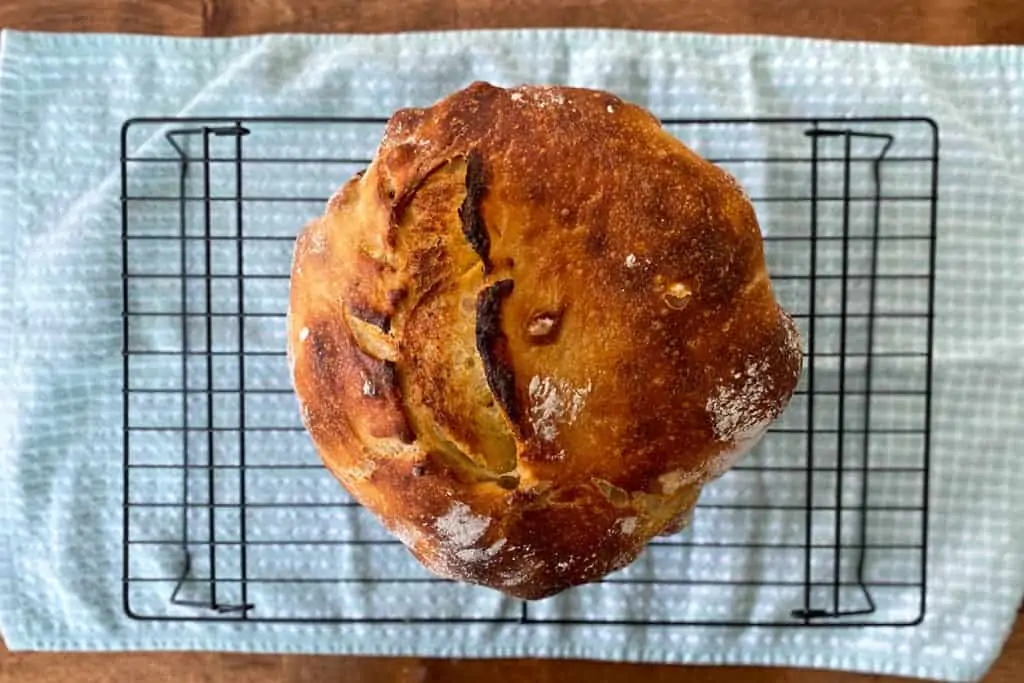
Once the bread is ready, use a bread knife to cut it open.
Sourdough can be tricky to slice with a dull knife. I love my Wusthof bread knife.
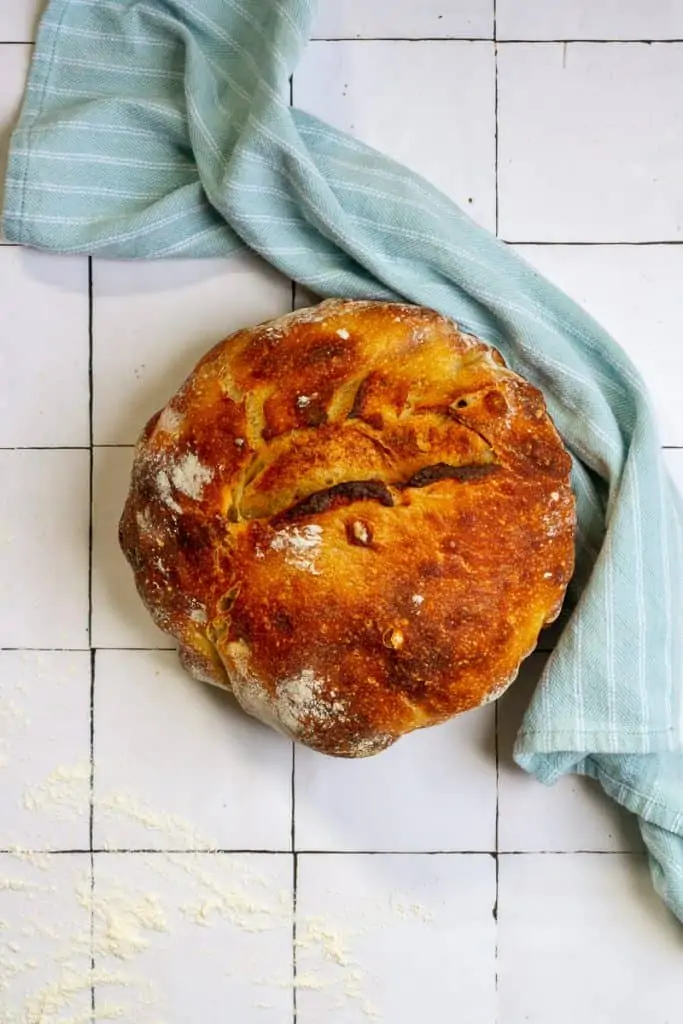
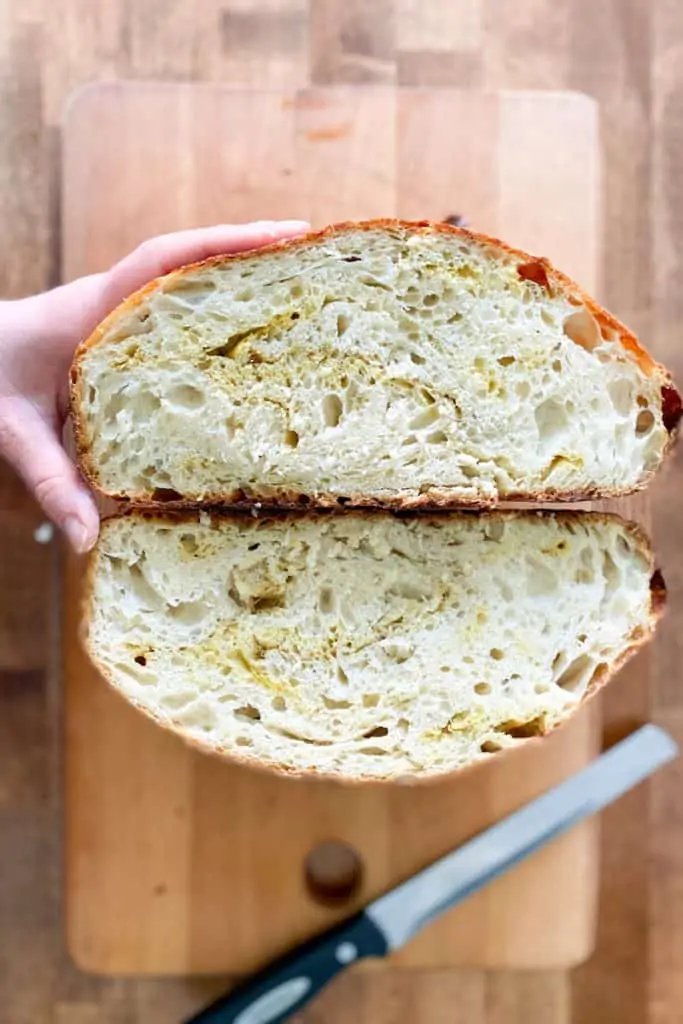
Serve your bread warm along with some basil butter, chive butter, mushroom butter or orange butter.
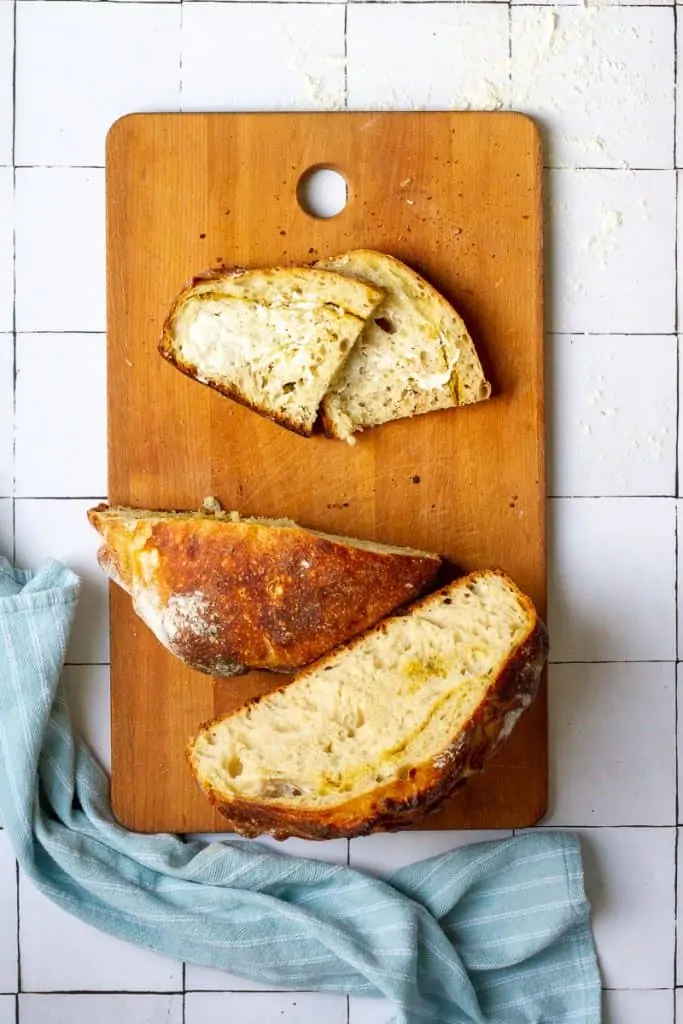
Rosemary Garlic Sourdough Bread
Equipment
- non-reactive bowl for proofing (glass or stainless steel)
- spray bottle with water (optional but helpful)
- damp towel or plastic wrap
Ingredients
Sourdough Base:
- 1 cup active (ripe/fed) sourdough starter (227 grams) See "Sourdough Starter" in recipe notes
- 5 cups unbleached bread flour (602 grams) See "Measuring by Volume or Weight" and "Homemade Bread Flour" in recipe notes
- 1¾ cups water (397 grams)
- 1 tablespoon salt (18 grams)
Flavor Additions:
- 2 teaspoons garlic powder (divided)
- 2 teaspoons dried rosemary (divided) Or use other dried herbs (like thyme, oregano or dried chives), or a mixture of herbs (such as Herbs de Provence).
- ¼ cup nutritional yeast (divided), optional
Instructions
Day 1: Make the Dough
- Combine the starter, flour and water in a large bowl or in the basin of your stand mixer. Do not add the salt yet.Use a large spoon or dough whisk to stir the dough together, or use the paddle attachment on your stand mixer to mix on medium-speed for about 60 seconds. Mix until the dough no longer clings to the bowl, and instead forms a ball.Allow the dough to rest about 20 minutes, and then add the salt.
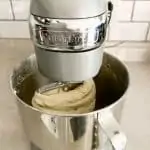
- Incorporate the salt by mixing again with the spoon, whisk, or stand mixer until just mixed. You may need to use your fingers to help work the salt into the dough until you don't feel the salt crystals anymore.Place the dough in a non-reactive bowl (such as glass or Pyrex), and cover the dough with a damp towel. Allow to rise for one hour.
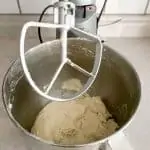
- Spritz a work surface with water and dampen your hands and (optionally) a flexible dough scraper.Gently move the dough onto the work surface. Using your hands or the dough scraper, spread the dough slightly and then fold the dough like a letter. (I fold the upper third down towards the center and then the bottom third up towards the center.)
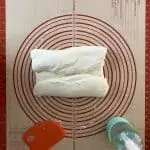
- Fold the sides of the dough in. (I fold the right third in towards the center and the left third in towards the center.)Flip the dough and repeat the stretching and folding process on the other side.
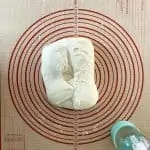
- Return the dough to the bowl, cover, and allow to rise for another hour.Repeat the rest and fold period two more times (for a total of 3 hours).On the third folding, add the herbs, garlic powder and nutritional yeast (if using) by folding it into the dough. Spread the dough slightly and then sprinkle half the herbs, garlic and nutritional yeast across the dough. Fold it like a letter, flip the dough, and spread it out again. Sprinkle the remaining herbs, garlic and yeast over the dough. Fold the dough one more time.
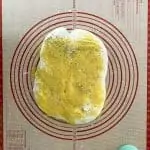
- Return the dough to the bowl and cover with a fitted lid, damp towel, or with plastic wrap.Do one of the following proofing methods (not both):Proof Refrigerated (Preferred Method): Place the dough in the fridge and proof for at least 8 hours, or up to 2 days (48 hours). If you used a towel (instead of plastic wrap) to cover the bowl, re-dampen the towel occasionally. Proof Unrefrigerated: (Only proof unrefrigerated if your kitchen is around 70°F or cooler). Place the dough out of direct sunlight on your counter and allow it to rise for about 8 hours, more or less, depending on the temperature. Check the bread to see if it's finished proofing by pressing the dough with a lightly floured or oiled knuckle. If the dough springs right back, allow it to keep proofing. If it's slow to spring back, it's ready.
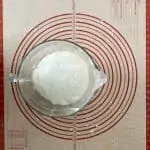
Day 2: Finish Proofing + Bake
- Dampen a work surface and your hands.Gently turn the dough out onto the work surface. Form the dough into a ball, place it seam-side up, and cover with a damp towel. Allow the dough to rest for about 15 minutes.Next, use dampened hands to roll the dough into a round ball. Place the dough on parchment paper.
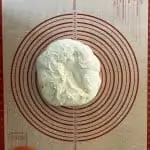
- If you proofed your dough in the fridge: Leave the dough to rise at room temperature until it's no longer cold (about 2½ to 3 hours).If you proofed your dough at room temperature: Leave the dough to rest on the parchment paper while the oven pre-heats, and then you can go ahead and bake.
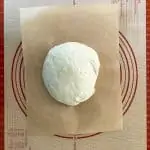
- About 30 minutes before you're ready to bake, pre-heat your oven to 480°F. If using a non-enameled pot, place the pot in the oven during the pre-heat.Just before baking, lightly dust the dough with flour, and then use a bread lame or a floured knife to score the bread. (Scoring will give steam an outlet and will prevent the bottom of the loaf from cracking.)Scoring can be as simple as one or two long lines across the top. If desired, you can create a pattern while scoring for a more decorative final loaf.

- If you pre-heated the Dutch oven, remove it carefully from the oven. Place the parchment paper and dough into the Dutch oven. Lightly spritz the dough with water, and then add the Dutch oven lid. Slide bread into the pre-heated oven.Lower the oven temperature to 450°F.Bake the bread for 45 minutes covered, and then remove the Dutch oven lid and bake uncovered another 10 to 15 minutes, until the center of the loaf is 210°F. If you don't have a digital thermometer, you can try gently knocking on the bottom of the loaf to see if it sounds hollow.

- Use a spatula, tongs or the edges of the parchment paper to move the bread onto a cooling rack.Wait at least 2 hours before cutting into the loaf. It will be tempting to cut it earlier, but the bread is still baking internally. Cutting early will result in an under-cooked loaf.Store the bread lightly wrapped on the countertop for up to 4 days, or wrap tightly and freeze up to 3 months. I recommend slicing the bread before freezing, so that you can thaw individual slices if desired. Thaw frozen slices by toasting or heating over low heat on a stovetop griddle or pan.

Notes
- A few hours before beginning, I feed my starter with 4 ounces of starter (discarding the rest), 4 ounces flour and 4 ounces water or an unflavored fermented drink (such as plain milk kefir or plain kombucha). (Measurements by weight.) The timing will depend on how active your starter is and the temperature in your kitchen.
- Make sure to use a very active sourdough starter. The size of the starter should (ideally) double within a few hours of feeding and (ideally) the starter should pass a float test.
- To do a float test, pinch off a small piece of starter and drop it in water. If it floats, it's ready. (This test isn't 100% accurate, but it's a good starting place.)
- Measure out 1 cup all-purpose flour. Remove 1 and ½ teaspoons of the flour.
- Add 1 and ½ teaspoons vital wheat gluten to the measured flour.
- Repeat with as many cups as needed or desired.
- Sift the flour together before using. For this recipe, make sure to measure the final amount by weight before proceeding. (Scoop out any extra and reserve for another use.)
- I highly recommend using a digital scale and measuring by weight (grams), not volume, especially if this is your first loaf (and especially for the flour).
- When using the scale, make sure to zero-out the weight of the bowl.
- If measuring by volume, scoop the flour into the measuring cup and then use the scoop to level off the cup. Do not measure by using the measuring cup as a scoop, because your flour will be packed too densely and your measurements will be inaccurate.


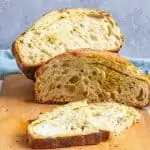
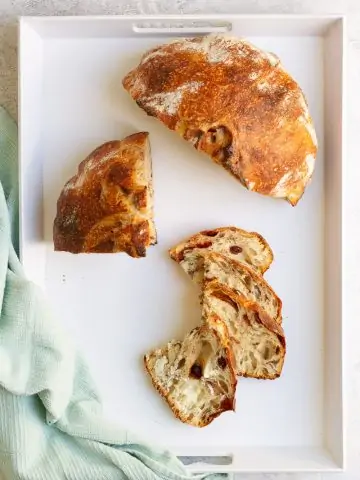
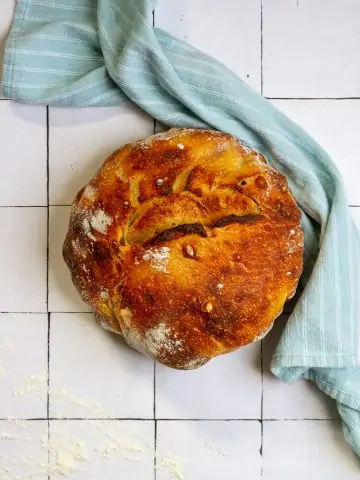
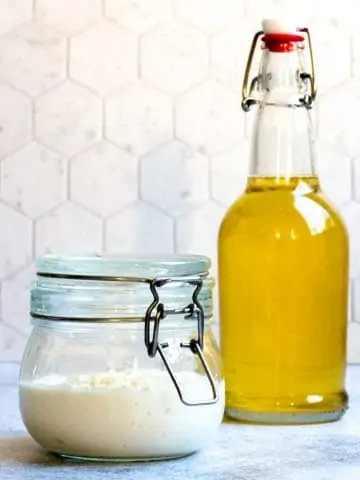
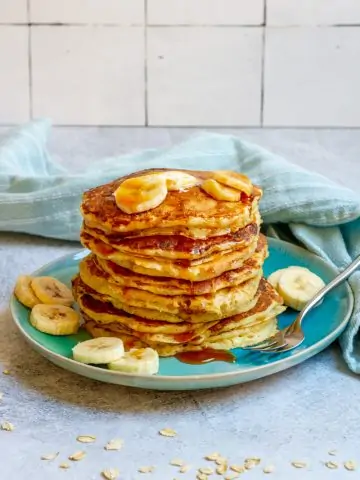
Loghan
One of the best sourdoughs I’ve ever made - so easy. I added the garlic and rosemary earlier in the stretch and fold process to incorporate them more and was so happy with the result!
Alisha Trenalone
Fantastic! We're thrilled it worked so well for you, and thanks for letting us know!
-Alisha at Champagne Tastes
Patricia Turner
I tried to make this and it over proofed on countertop. 2 questions. If I half recipe...how long do I bake. Also, how do I keep it from sticking to bowl when proofing?
Alisha Trenalone
If you’re having trouble with the (much finickier) countertop proofing, I definitely recommend a refrigerator proof.
Question 1- Sorry, we haven’t tried halving this recipe. If you make the full batch and it’s too much bread, you could freeze half of it. Otherwise you might need to experiment with the timing for a halved loaf. The internal temperature should be the same as with a full loaf of bread. (Also the size of the preferred Dutch oven would be smaller.)
Question 2- I haven’t had trouble with the dough sticking to my bowl (even when I’ve over-proofed). It sounds like your dough might be too wet? I recommend weighing the ingredients to make sure the flour to water ratio is correct.
Hope that helps!
-Alisha at Champagne Tastes
Patricia Turner
I remade this recipe, and it was really good. I actually incorporated the seasoning at the first fold process, and it turned out wonderful. However, I do have a couple questions. 1.) At what point can I divide dough and freeze half? 2.) What can I do to ensure the crust is a bit softer?
Alisha Trenalone
I’m so glad it worked out this time!
As for your questions-
1) We’ve only frozen this bread AFTER baking. Once baked, you can slice and freeze anything you can’t use quickly, and then reheat slices as you’re ready to eat them. I haven’t tried freezing the dough.
2) This style of Dutch oven artisan style sourdough does have a crispy crust. You might try making a sandwich-style sourdough loaf if you’re looking for a softer crust. (We don’t have a recipe for that style on our site just yet.)
I hope that helps!
-Alisha at Champagne Tastes
Patricia Turner
Thank you!
Connie
Storing your sourdough bread; https://youtu.be/QmvCpfsYcZk
This guided me to a softer crust.
Beth
Can I use fresh garlic and Rosemary minced instead of dried?
Alisha Trenalone
Hi Beth, we've only tested it with dried garlic and rosemary, but I think fresh would work just fine! Let us know how it goes!
-Alisha at Champagne Tastes
Connie N Birkland
Absolutely love love your sour dough bread recipe. I have a hard time following any recipe to the tee. Several minor diffs to share. I utilized fresh minced garlic, herbs (Rosemary, Thyme, Basil and some powdered garlic) and divided into a total of 12 buns. I prefer softer crust, therefore oiled the buns with olive oil and spritzed with water while rising. Baked on a stone pan lined with parchment paper for 30 minutes at 380 degrees. Best bread I have ever made. Another batch already in the works 🙂 Didn't have a Dutch oven although may try that in the future! Thank you! :0
Alisha Trenalone
That sounds amazing, Connie! Thanks for letting us know how much you enjoyed it ☺
-Alisha at Champagne Tastes
Chuck
As I prepare to make this recipe, one question: How can it contain no oil?
Alisha Trenalone
Hi Chuck,
This recipe doesn't require oil, but you will need the parchment paper to keep it from sticking to the Dutch oven.
Hope it turns out well!
-Alisha at Champagne Tastes
Lauren
I've made this twice in 2 weeks and both times, the bread has been DELICIOUS! I used fresh Rosemary from my garden. The texture and flavor was perfect
Alisha Trenalone
Fresh rosemary, nice! So glad it came out well!
-Alisha at Champagne Tastes
JD
Made it and it had a great flavor, though I would increase the amount of flavor additions as a personal preference. My bread was pretty dark and burnt after the 45-minute mark of it being covered, which is a shame with the amount of flour used in this recipe. I think preheating my oven to 480 as suggested was the wrong move as it baked the outside so quickly and left a pretty hard chewy crust. The inside, however, was soft and flavorful. I'll try it again just starting at 450 as with other recipes I have tried. For reference, I did use a scale and checked my oven temp.